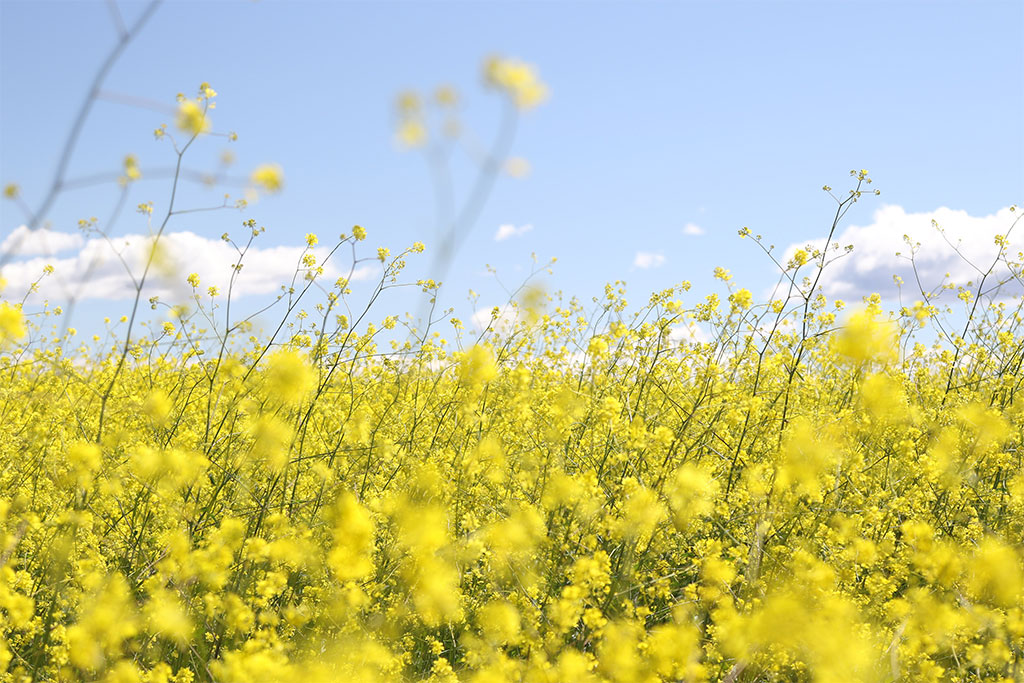The first day of spring is just around the corner, and we all know what that means — blue skies, blooming flowers, and luscious green lawns are just around the corner!
But before we land barefooted right in the sweet spot of everybody’s favorite season, we have to first make it through the ups and downs of spring’s crazy weather patterns (thunderstorms, sunshine, heavy winds, cool fronts, warm fronts, repeat … and that’s only a Wednesday).
March and April showers do indeed bring May flowers, but they also bring mold spores and pollen from grass, weeds, and trees. And while most people associate allergy season with typical allergy symptoms like sneezing, runny noses, and chest congestion, those tiny little allergens can wreak big-time havoc on your eyes, too. Especially if you wear contacts.
What Are Eye Allergies?
Here’s something you probably weren’t prepared to read today… the layer of skin behind your eyelids is the same kind of skin lining the inside of your nose. Ewww, right?
This means a couple of things. First, tears are basically just eye snot (prove us wrong). And, because the two areas are so similar, the same things that trigger allergic reactions in your nose can trigger allergic reactions in your eyes.
So whether you’ve got a nose full of snot or an eye full of tears (sorry, had to), your body’s immune system has encountered an allergen and is releasing histamine and causing physical reactions to force the substance out of your body.
Allergies and Contact Lenses
During allergy season, more allergens than normal are floating around in the air. And because Mother Nature has a wicked sense of humor, she naturally decided to make March and April the windiest months of the year.
For contact wearers, this often leads to drier eyes, dirtier lenses, and even more irritation.
Don’t let allergies ruin your day. nJoy the Spring LA$1K Savings with $1k off LASIK!
Common Eye Allergens
- Mold
- Pollen (grass, trees, and ragweed)
- Smoke
- Pet dander
- Dust
- Perfumes or other chemical scents
- Preservative chemicals in eye drops
Eye Allergy Symptoms
- Allergic conjunctivitis
- Burning or tearing of the eyes
- Red, swollen, or itchy eyes
- Dry eyes
- Sensitivity to light
- Screaming at your contact case
Avoiding and Treating Seasonal Allergies
Unless you’re really good at holding your breath or walking around blindfolded, you can’t avoid all outdoor allergens during allergy season. But, with careful planning, you can minimize your exposure and prepare for what to do when they get all up in your business.
How to Avoid Eye Allergies
Many people don’t know which allergens they react to the most, so they don’t know which to avoid. An allergist can help by performing skin and blood tests to identify these for you, but the simplest way to avoid seasonal eye allergies is to protect your eyes from coming into contact with allergens. Some specific ways to do that are:
- Monitor daily pollen counts and spend less time outdoors when pollen counts are very high.
- Protect your eyes from pollen by wearing sunglasses or eyeglasses.
- Keep pollen from blowing into your home or car by closing windows and doors.
- Take off shoes, jackets, and hats as soon as you enter your house so you don’t track allergens through your house.
- Remove lingering pollen from your skin and hair by taking a shower before going to bed.
- Bonus tip for kids (and some dads): Don’t rub your eyes or pick your nose until you’ve washed your hands.
How to Treat Eye Allergies
Talk to your eye doctor about the best way to treat eye allergies, especially if you wear contacts. If possible, it may be best to limit wearing your contacts during allergy season. Common over-the-counter (OTC) and prescription (Rx) eye allergy treatments include:
- Artificial tears (OTC) – these special eye drops mimic your own tears by washing away allergens and adding moisture to relieve dryness and irritation.
- Decongestant eye drops (Rx & OTC) – decongestant eye drops reduce redness by narrowing the blood vessels that cause red, bloodshot eyes.
- Antihistamine eye drops (Rx) – antihistamine eye drops reduce itchiness and watering by blocking histamines your body produces in response to an allergen.
- Mast cell stabilizer eye drops (OTC & Rx) – mast cell stabilizers help prevent symptoms by stopping the release of histamine and other chemicals during an allergic reaction.
- Corticosteroid eye drops (Rx) – corticosteroid eye drops treat severe or chronic eye allergy symptoms and are not recommended for long-term use due to possible side effects that include increased eye pressure, cataracts, and glaucoma.
- Non-steroidal anti-inflammatory drug (NSAID) eye drops (Rx) – topical NSAID eye drops reduce inflammation and control pain and discomfort.
- Immunotherapy shots (Rx) – allergy shots contain tiny amounts of an allergen and are injected into your body at increasingly higher doses to help your body build an immunity to that allergen.
- Multiple-action allergy eye drops (Rx) – multi-action or dual-action eye drops contain more than one kind of medicine to treat several symptoms at once.
- LASIK (Rx) – for allergy sufferers who wear contact lenses, laser vision correction can be a permanent solution for constant eye irritation.
Spring Fever Over Hay Fever?
After months of being wrapped up in layers of fluffy coats and itchy wool accessories, we’re catching a severe case of Spring Fever over here. But if the mere thought of frolicking through a meadow full of wildflowers makes your eyes tear up (with hay fever, not happiness), now’s time nJoy the Spring LA$1K Savings with $1K off LASIK at nJoy Vision. Please request a consultation online or call (405) 842-6060 today.

